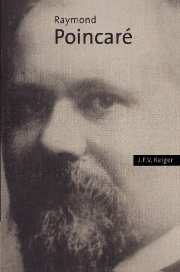
The International Academy of Digital Arts and Sciences or IADAS was founded in 1998 in New York to help drive the progress of the Internet and evolving forms of new media. The academy selects the nominees and winners for the Webby Awards.
Membership is by invitation only. A partial list of past and present academy members include:
Scott Adams, cartoonist, Dilbert
Serena Altschul, journalist, CBS News
Katie Arnold, managing editor, Outside magazine
John Perry Barlow, co-founder and vice chairman, Electronic Frontier Foundation
Beck, musician
Björk, musician and actor
David Boaz, executive vice president, Cato Institute
David Bowie, musician
Richard Branson, chairman and founder, Virgin Atlantic Airways
Bernie Brillstein, founder, Brillstein-Grey Entertainment
Phil Bronstein, executive editor, The San Francisco Chronicle
Tina Brown, commentator and CNBC host
Stewart Butterfield, Co-founder, Flickr
Vint Cerf, senior vice president, MCI
Julia Child, chef
Collin Cole, president - Digital Media, frog design
Francis Ford Coppola, film director
Elizabeth Daley, dean, USC School of Cinematic Arts, University of Southern California
Esther Dyson, publisher and editor
Larry Ellison, CEO, Oracle Corporation
Caterina Fake, Co-founder, Flickr
Rob Glaser, CEO, RealNetworks
Ira Glass, host of This American Life, Public Radio International
Carl Goodman, curator, American Museum of the Moving Image
Jerry Greenfield, co-founder, Ben & Jerry's
Jim Griffith, moderator, rec.humor.funny
Matt Groening, creator, The Simpsons
Peter Guber, chairman, Mandalay Pictures
Julia Butterfly Hill, activist and author, Circle of Life Foundation
Arianna Huffington, political columnist
Mizuko Ito, visiting scholar, USC Annenberg Center for Communication
David S. Jackson, editor, http://DefendAmerica.gov/, U.S. Department of Defense
Guy Kawasaki, founder, http://Garage.com/
Isaac Kerlow, director - Digital Production, the Walt Disney Company
John Kilcullen, president and publisher, Billboard.com
Raph Koster, creative director, Sony Online Entertainment
Newton Lee, founder and editor-in-chief of Computers in Entertainment, Association for Computing Machinery
Dan Lynch, chairman, Lynch Enterprises
Virginia McHugh, executive director, Association Montessori Internationale USA
Seymour Papert, author, Connected Family
Joseph Patel, writer and producer, MTV News
Tom Peters, author, In Search of Excellence
Kim Polese, chairman, Marimba, Inc.
Larry Rinder, curator of contemporary art, The Whitney Museum of American Art
Jennifer Ringley, proprietress, JenniCam
Anita Roddick, president, The Body Shop
Marina Rosenfeld, artist and composer
Robert Senn, executive vice president, the Grammy Awards
Doug Sery, editor, MIT Press
Richard Stallman, Chief GNUisance, GNU Project
Sister Patricia Stanley, Technical Support, Sisters of St. Joseph
Cyndi Stivers, president and editor-in-chief, Time Out NY
Nadine Strossen, president, ACLU
Sherry Turkle, director, MIT Initiative on Technology and Self
Dennis Valle, director of New Media, Dolce & Gabbana Spa
Katrina vanden Heuvel, editor-in-chief, The Nation
Hal Varian, Professor, University of California, Berkeley
Karen Watson, New Media Project development officer, Corporation for Public Broadcasting
Jonathan Weber, editor-in-chief, Industry Standard
David Wetherell, chairman and CEO, CMGI, Inc.
Bebo White, historical web artifact, Stanford Linear Accelerator Center
Judy Wieder, editor-in-chief, The Advocate
Gail Williams, director of communities, Salon.com: The WELL & Table Talk


 Honors
Honors
 Geography
Geography


 Aftermath
Aftermath




